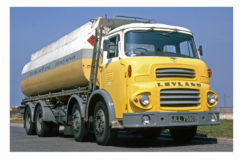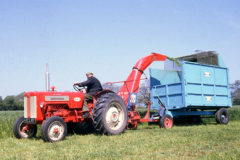ERF – the best of British
Posted by Chris Graham on 13th June 2020
To help celebrate ERF – the best of British – Mike Forbes presents a selection of historic lorry photographs from the brilliant, Chris Hodge ‘Stilltime’ archive.

ERF – the best of British: We start with an example of the original eight-wheeler from ERF, designated the CI.682, fitted with the ‘Saloon’ cab. Seen in the dark days of World War II, with a cowled headlght and white-edged wings and side-raves, FLG 212 (Cheshire, 1938), was working with a draw-bar trailer, for the haulage fleet of Thomas Tilling Ltd.
We all know the story of how Edwin Richard Foden left the family fold in 1932 and, with his son Dennis and others, produced a range of diesel-powered lorries, using proven proprietary components, Gardner engines, David Brown gearboxes, Kirkstall axles, Clayton-Dewandre brakes and so on, setting the scene for years to come.
The CI.4 and larger-engined and multi-axle derivatives continued to be produced until after World War II, when the exposed radiator gave way to the ‘V’ cab, with its curved grille on a new range. Then, in 1953, the revolutionary ‘Kleer Vue’ or KV cab did a lot to change how lorries looked. Features like the ‘Greyhound’ tapered chassis, designed by Ernest Sheratt, chief designer at ERF for many years from the start, combining strength and light weight.
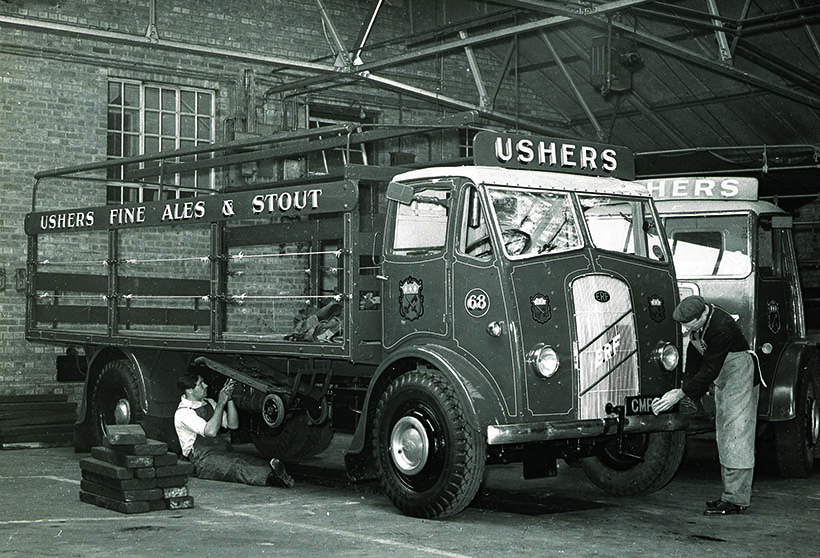
Most likely the lighter OE4 model with the Gardner 4LK engine, this ERF was registered in the early war years, and fitted with the ‘Streamline’ cab. Still looking smart and part of the delivery fleet of Ushers Brewery, in Trowbridge, Wiltshire, in the 1950s, it was seen being prepared for service along with a Sentinel to the rear.
The KV was replaced on up-dated models from 1962 by the LV, with glass-fibre panels and a one-piece windscreen, with two versions from Boalloy and Jennings. This cab was up-dated in the early 1970s, for the A Series and other models which continued. Cummins and Rolls-Royce engines were available as alternatives to Gardner power.
The main features of the A Series were retained for the B Series from 1974, with the new SP cab, now available as a day cab or sleeper version. Again, this was successful, as were the follow-on C Series from 1981, E Series from 1986, the EC and ECX, right up to the MAN take-over and eventual closure in 2008.
There’s a lot more to the ERF story, but we’ve got a series of photographs from the pre-war days up to the 1980s here, which I hope will please all our readers, especially the ERF enthusiasts…
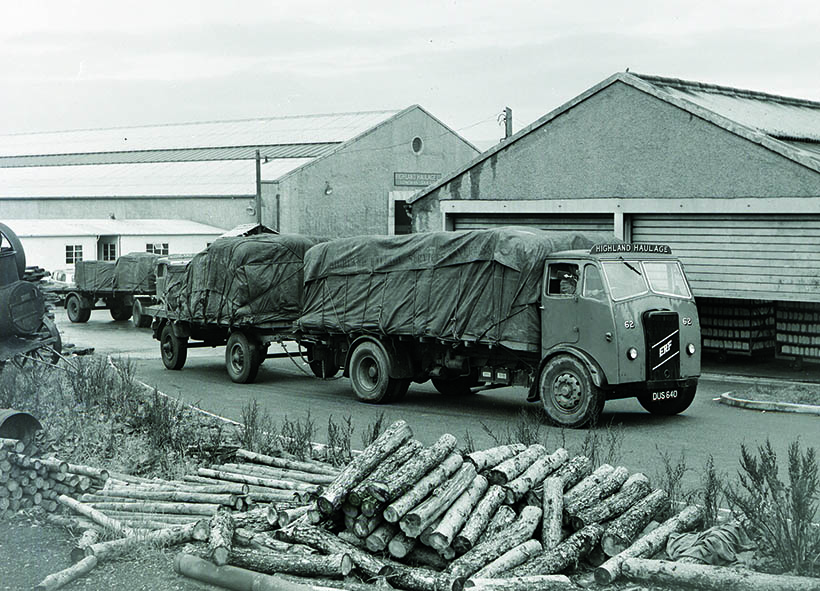
Yet another cab style adorned this CI.5, DUS 640 (Glasgow, 1944), which was still in use with a draw-bar trailer in the fleet of Highland Haulage, based in Inverness, during the 1950s.
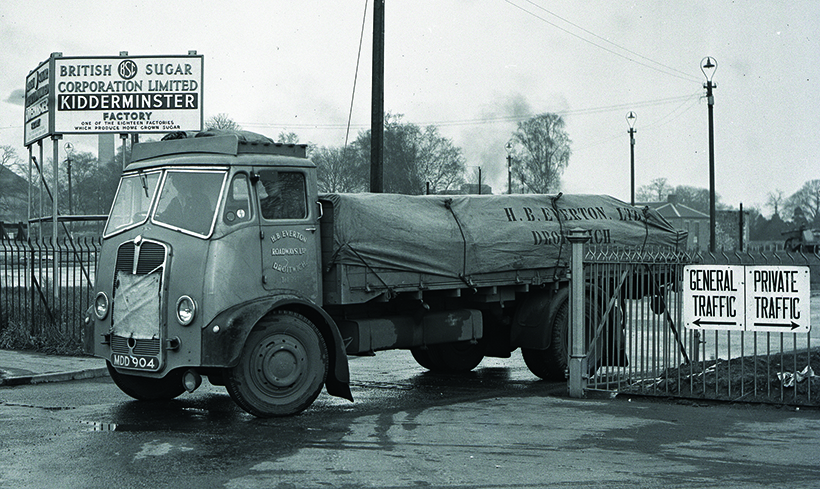
Fitted with the ‘Willenhall’ all-steel version of the V cab – identified by the different wings – was this 54G dropside, MDD 904 (Gloucestershire, 1953), of HB Everton Roadways Ltd, Droitwich, seen leaving the Kidderminster factory of the British Sugar Corporation.
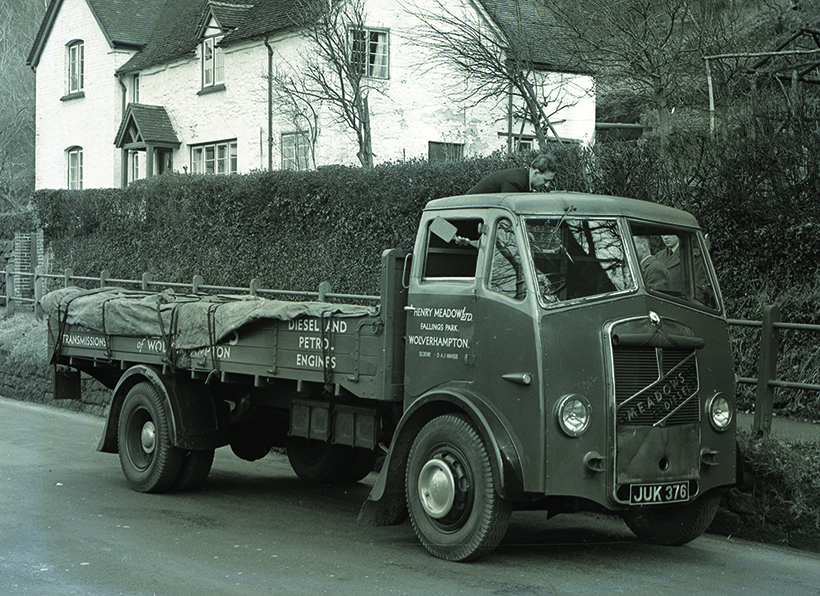
In comparison, this vehicle on test, a four-wheeled dropside, JUK 376 (Wolverhampton, early 1952), from the Henry Meadows fleet, was fitted with this manufacturer’s engine under its standard Jennings-coachbuilt ‘V’ cab.
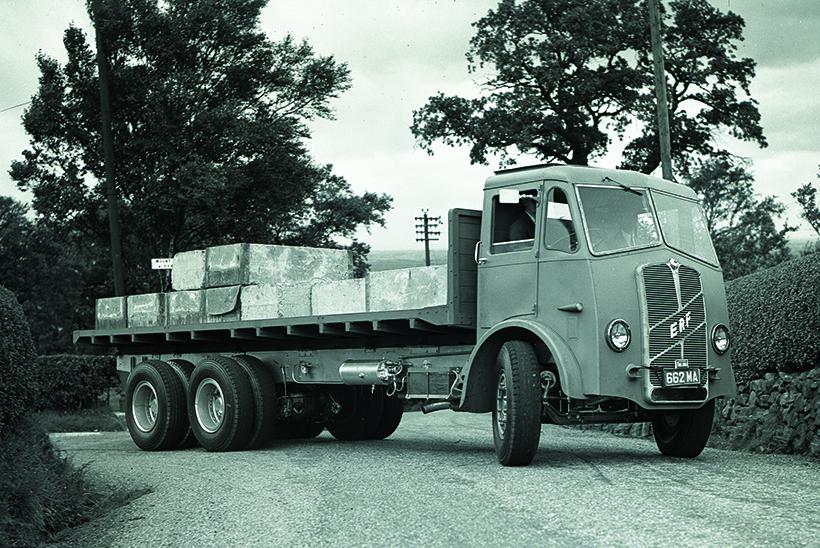
This 66G with ‘V’ cab was photographed while on test from the factory on trade plates 662 MA by Commercial Motor in the early 1950s. The platform body was loaded to the vehicle’s maximum gross weight, with concrete blocks, while the lack of rear mudguards was unusual. This was actually a special, heavy-duty export chassis – note that the top half of the cab was removable for shipment.

This 68G eight-wheeler, XTU 478 (Cheshire, 1956), fitted with the KV cab, was being used by Harris Road Services, of Lostock Gralam, Northwich, in an experiment, pulling a draw-bar trailer with a difference, being a Scammell automatic-coupling semi-trailer, attached with a special ‘dolly’, to create the typical, long-distance haulage outfit up to the 1960s. For local delivery work, the trailer was attached to VLG 673 (Cheshire, 1955 – possibly a re-registration); a tractor unit with the earlier style of exposed radiator.
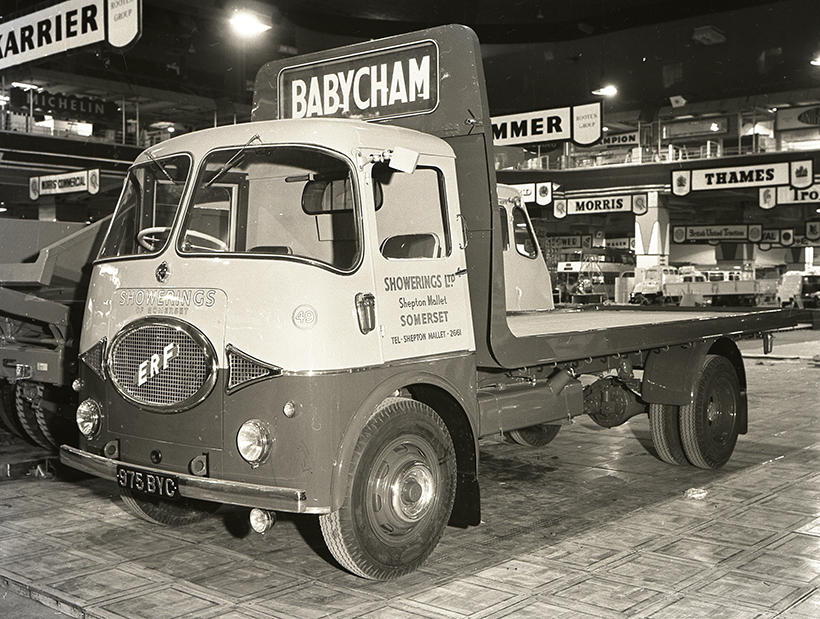
Showerings of Shepton Mallet in Somerset, was well-known for the many ERFs in its fleet over the years, as well as its champagne perry, ‘Babycham’, advertised on the tall headboard of its platform vehicles, like this attractive-looking 44G, registered 975 BYC (Somerset, 1958), seen at that year’s Commercial Motor Show. The taper of the chassis with the clearance over the diff can just be made out in this shot.
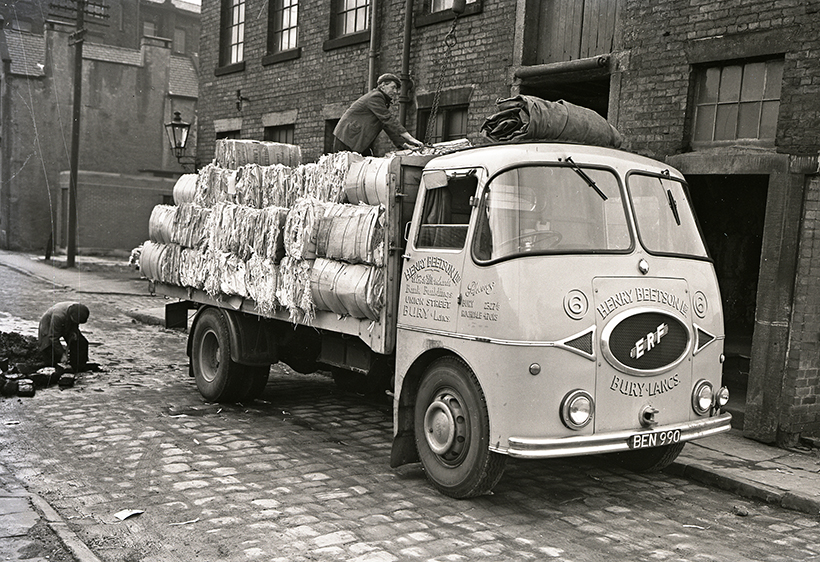
An early, KV-cabbed 54G (the designation referring to the five-cylinder Gardner engine and nominally four wheels), BEN 990 (Bury, 1953), is being loaded with bales of scrap cardboard with a hoist, from a run-down looking warehouse in a back street, for its operator, Henry Beetson Ltd, of Bury, Lancashire.
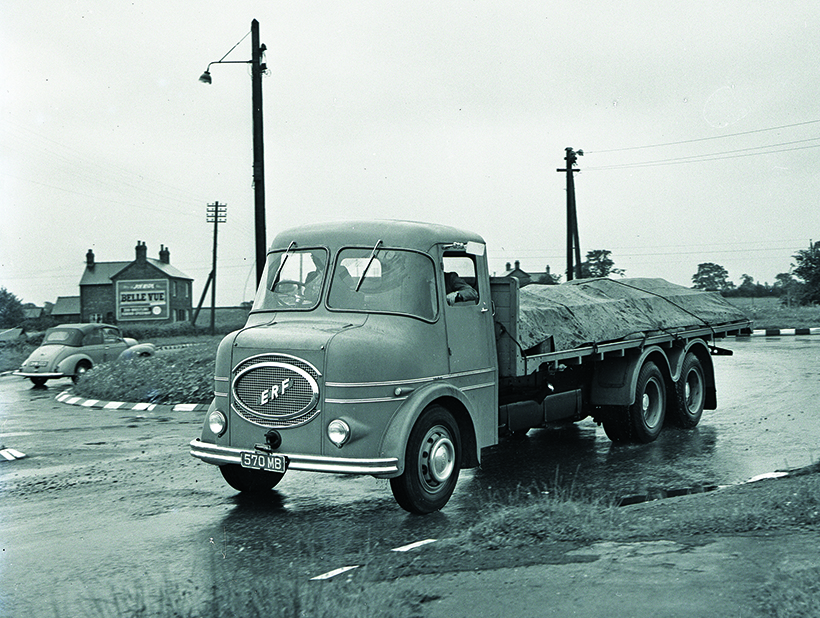
The semi-normal control version of the KV cab, ostensibly designed for but not greatly used by the brewery trade, with its three-man crews, although used on general haulage by a number of companies was, for obvious reasons, nicknamed ‘Sabrina’, after the stage-name of voluptuous glamour model and actress Norma Sykes. An early example, designated 66GSF, is seen at a roundabout, loaded with test weights on trade plates 570 MB in the late 1950s.
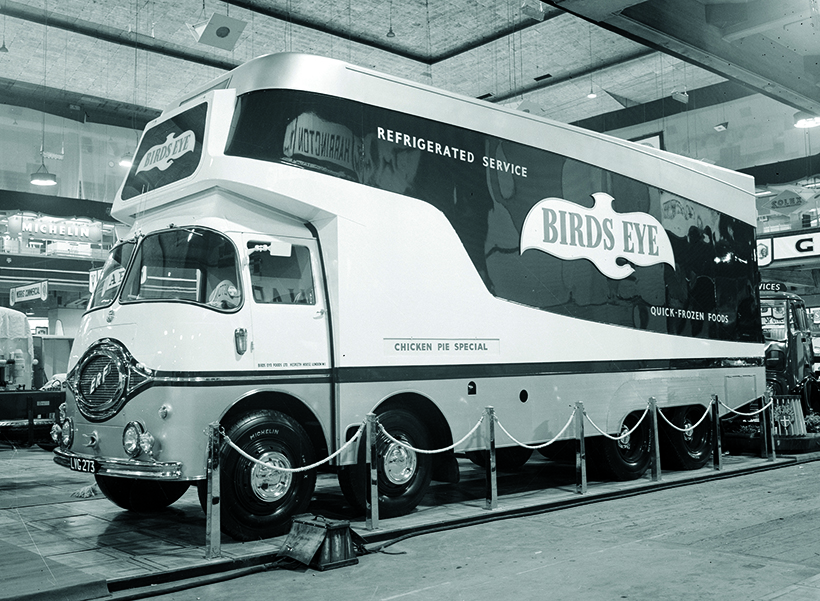
The Bird’s Eye name is still well known. Into the early 1960s, alongside railway containers, the company used a fleet of striking ERF 68G eight-wheeled refrigerated vans, like LVG 273 (Norwich, 1958), seen at that year’s Earls Court show, which made bulk deliveries from the quick-freezing factories to distributors, with legends like ‘Chicken Pie Special’ on the side, before moving over completely to road transport.
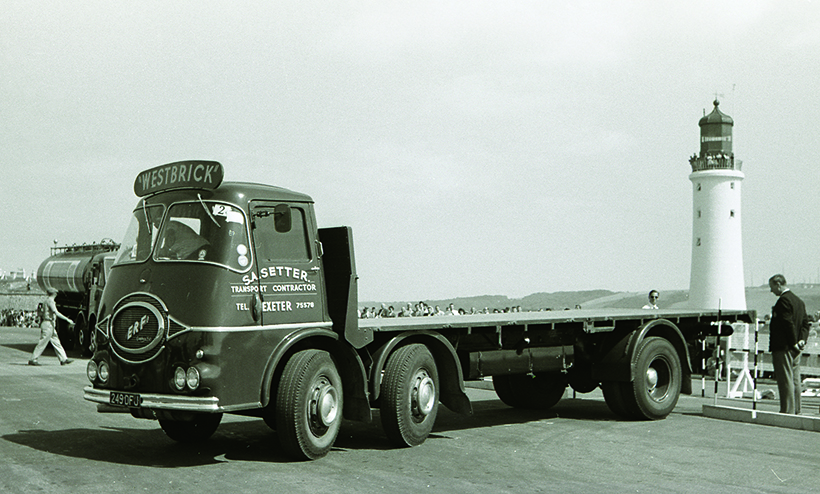
Seen at an LDOY round staged on Plymouyh Hoe was this ERF 56RSG ‘Chinese Six’ with the ’set-back’ axle-style of KV cab, 249 DFJ (Exeter, 1961), from the fleet of SA Setter of Exeter, which worked on contract to Westbrick.

This KV-cabbed tractor unit, RCN 197 (Gateshead, late 1963), of Cawthorn & Sinclair, based in Birtley, County Durham, was used on continental services, via the then new roll-on, roll-off ferries, and is seen about to be unloaded in a French side street, as the tarpaulin cover is removed from its tilt trailer.
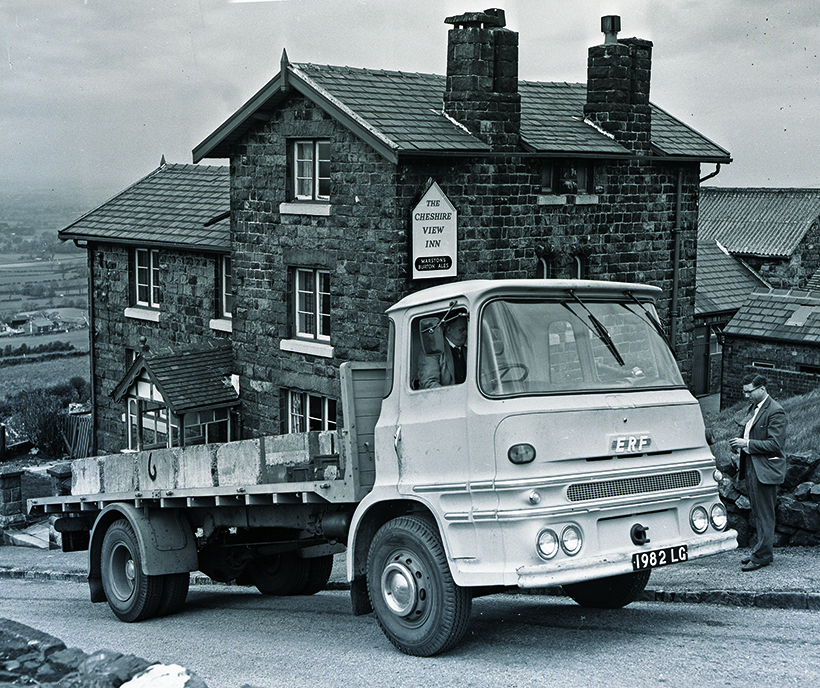
Although a few operators continued to specify variants of the KV cab up to 1966, the 1960s could be said to be the era of the LV cab, in its various forms. This is an early LV-cabbed 54G, 1982 LG (Cheshire, 1963), seen re-starting on a steep hill during a press test. This is the Boalloy version of the LV cab, which had a full-width lifting front panel and vertical door handles.
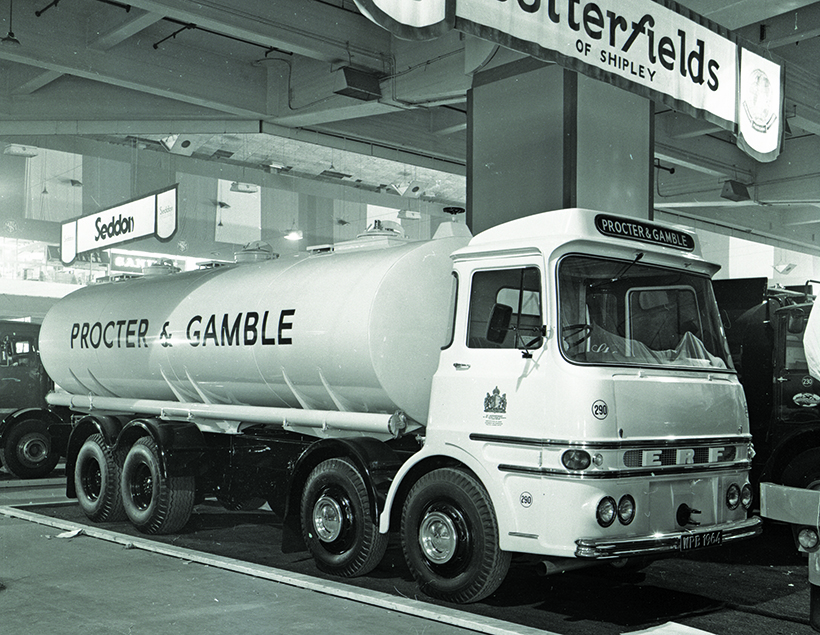
This early LV cab was the Jennings version, which had a narrower hinged front inspection panel and horizontal door handles. It was on an eight-wheeled tanker for Proctor & Gamble, unusually fitted with ‘super single’ rear wheels and tyres, on the Butterfields stand at the 1964 Earls Court show.
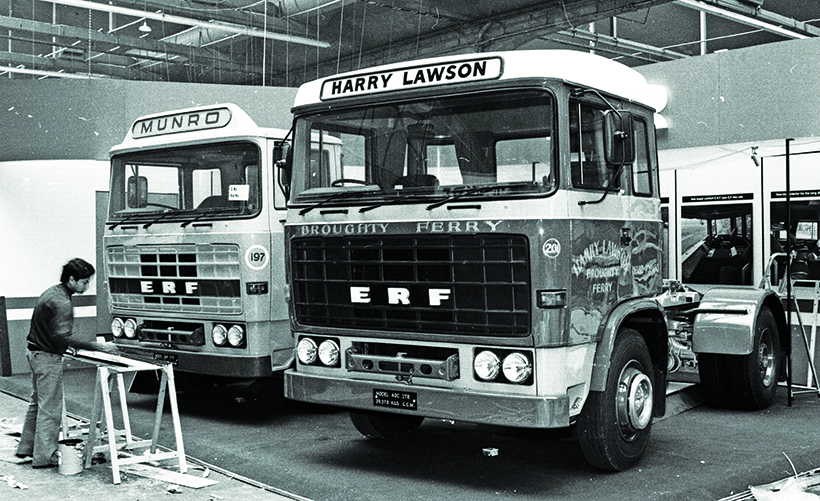
Two ERF B Series tractor units are seen during the build-up of the Scottish Show. The new SP cab, with ‘Sheet Moulded Compound’ panels on a steel frame replaced its glass-fibre predecessor on the A Series. Tractor units started to appear in 1975. The sleeper cab Cummins-powered model 40C 2TR was in the livery of Harry Lawson of Broughty Ferry, while the day cab 38R 2TR version, with Rolls-Royce engine, was in Munro of Aberdeen’s colours.
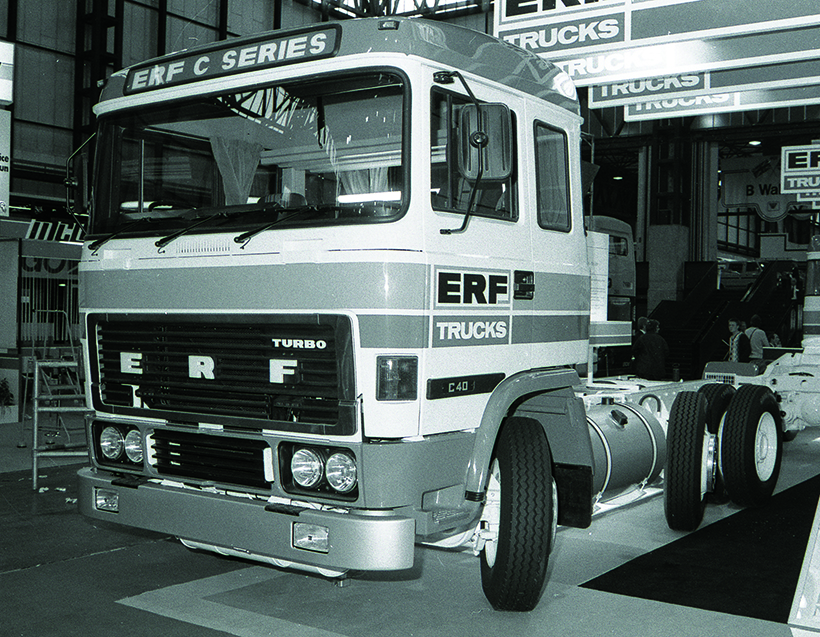
The C Series featured an up-dated SP3 cab and various weight-saving features on the chassis. This Cummins-powered twin-steer C40 was displayed at the 1982 NEC Show, in anticipation of the increase in permitted maximum gross vehicle weight, which finally materialised in 1983, increased from 32.5 metric tonnes to 38 tonnes on five axles.
For a money-saving subscription to Vintage Roadscene magazine, simply click here



